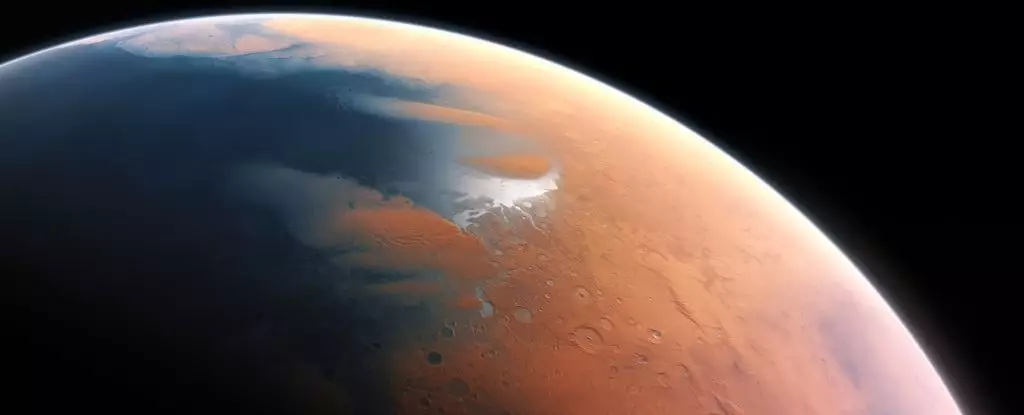Mars has long captivated humanity’s imagination, both as a target for exploration and as a subject of scientific speculation. Once thought to be a barren wasteland, recent studies reveal a more intricate and wet history. A groundbreaking analysis of data collected by the Chinese National Space Administration’s (CNSA) Zhurong Mars rover has provided compelling evidence that Mars was not merely a dry, dusty planet but once hosted massive bodies of water, potentially oceans, billions of years ago. This article delves into the implications of these findings and what they mean for our understanding of Mars and the possibility of ancient life on the red planet.
Researchers led by Jianhui Li and Hai Liu have harnessed cutting-edge ground-penetrating radar (GPR) technology to uncover features beneath Mars’ surface that resemble ancient beach deposits. As Zhurong traversed the Utopia Planitia, its sensors collected data about subsurface formations down to an astonishing depth of approximately 80 meters (260 feet). The results were intriguing: layers of materials sloped upwards towards what appeared to be a former shoreline, marked with a consistent angle reminiscent of ancient coastal lines on Earth. These formations suggest that Mars once cradled a significant ocean, aptly named Deuteronilus, hinting at a time when the Martian landscape was marked by flowing rivers, tides, and waves.
The recognition of these geological features challenges long-standing assumptions about Mars. Although it presents a dusty and arid landscape today, this new evidence suggests a dramatically different climate, marked by liquid water that played a critical role in shaping the planet’s surface. As geophysicist Michael Manga points out, understanding the presence of oceans is vital as they significantly influence climate, surface morphology, and the potential for habitability.
While the detection of these submerged structures highlights that Mars once hosted substantial amounts of liquid water, the bigger questions loom: How much water existed, and where did it all go? The current consensus among scientists is that Mars has experienced significant climatic changes, transitioning from a water-rich environment to its present arid state. The transition may have taken millions of years, leading to the disappearance of its water through various geological processes.
Recent studies suggest one fascinating possibility: large reservoirs of liquid water may still lie beneath the surface. These vast deposits could have been absorbed into Mars’ interior, creating unreachable aquifers that persist to this day. If true, understanding these reservoirs could be crucial in piecing together how Mars transformed over time and what remains of its aquatic past.
Beyond understanding the geological features of Mars, the presence of ancient oceans raises tantalizing possibilities regarding the existence of life. Coastal areas on Earth are the cradle of early life, thriving in environments where land, water, and atmosphere intersect. Manga and his team’s research suggests that ancient Martian shorelines may share similar characteristics. As such, these regions could prove vital for scientists aiming to uncover any evidence of past life on Mars.
Merging the findings from Zhurong’s radar with data from orbiting satellites paints a compelling picture of Martian history. Identifying ancient coastal environments could guide future exploration missions aimed at locating and analyzing sites with the potential for fossilized signs of life. By narrowing down search parameters, these missions stand a better chance of uncovering evidence that could reshape our understanding of life in the universe.
As we stand on the brink of a new era in Martian exploration, the revelations prompted by Zhurong’s findings are just the beginning. The next steps involve further investigating the traces of liquid oceans and modeling potential waves and tides on early Mars. Such inquiries will yield a more profound understanding of the planet’s hydrological history, climate evolution, and geological processes.
The recent discoveries related to ancient Martian water bodies illuminate a fascinating chapter in the planet’s history. Not only do they portray a once-thriving watery world, but they also evoke a sense of wonder about life beyond Earth. As we endeavor to explore Mars deeper, these past revelations may provide critical insights that echo across the cosmos, urging humanity to contemplate the broader implications of life in the universe. Understanding Mars is not merely an academic pursuit; it opens new avenues for discovering our place in the grand tapestry of existence.

